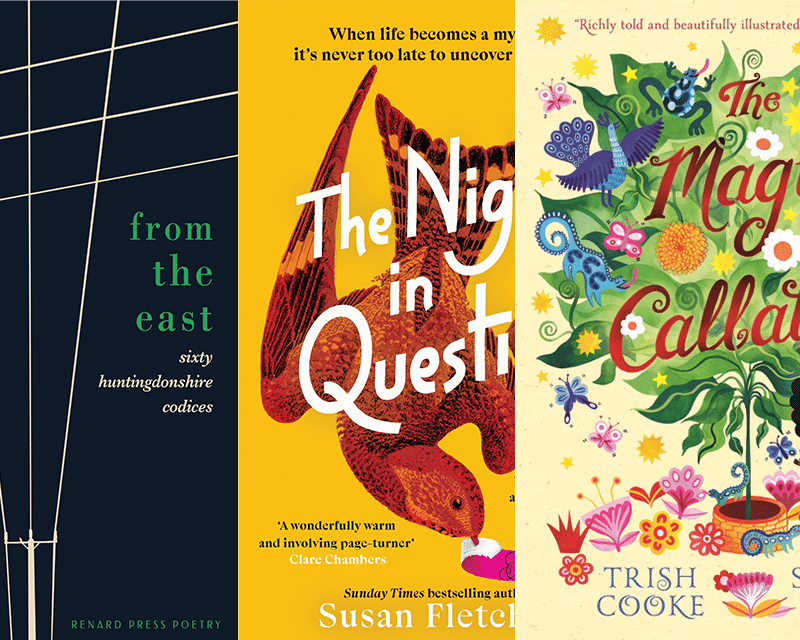- Collected
- Article
A Cat Named Lonesome
In search of disappearing writers

- 4 January, 2016
- Tom Bryan
On 19th July 1955, the California State Police found a 1954 Plymouth Savoy parked on the north side of the Golden Gate Bridge in San Francisco. Keys were still in the ignition. The car belonged to the poet Weldon Kees (1914–55?). Kees was never heard from again; a body was never found.
My obsession with the missing poet and his work hadn’t yet begun when I first stood on the Golden Gate Bridge in 1974. A San Francisco friend, Don, took me for a stroll on the iconic bridge he had known all his life. He hadn’t heard of Kees either but he was especially concerned about the lack of safety barriers on the bridge. Peering down into the rippling, sparkling water of San Francisco Bay, I understood his concern. The bridge barrier was scarcely four feet high. Even a small adult could vault over it.
Don had done his research. He explained:
There have been approximately 1600 suicides since the bridge opened in 1937. This is a conservative estimate. Many jumpers have done so secretly under cover of night. The bridge is roughly 245 feet above the water. The jumper, depending on body weight, will be travelling between 75 and 80 miles per hour before impact. The jump will last about four seconds. There are 206 bones in the human body and any or all or most of them may be broken in the jump. The odds of surviving the jump are approximately 5% and most of that 5% perish within minutes due to drowning or hypothermia. Many bodies are never found, due to currents and undertows, fog and darkness.
Twenty years later I thought about that cold July day on the Golden Gate Bridge and began researching Kees. I have since written fiction, non-fiction and poetry about him; the manner of his tragic disappearance at times haunts me. I dream about it a lot — perhaps too much.
We don’t know for sure if Kees was dead. He had intimated he might begin life afresh in Mexico. His close friends went to his flat. His passport and savings book weren’t found; instead, they found his red socks steeping in a white sink and a very hungry pet cat purring for food and water. The cat’s name was Lonesome.
We can’t prove that Kees committed suicide; many people fake their own deaths for many reasons. If the ultimate volitional disappearance and vanishing act is self-obliteration then writers seem good at it. Maybe it is an occupational hazard. Writers are often isolated and sometimes vulnerable; they often frequently struggle for a living. Their enemies might be political ones or, perhaps as bad, their own mental ones. Disappointment is never far away. Manuscripts are rejected, but bills must somehow be paid.
Moreover, even successful or celebrated writers have their demons. It is not hard to find examples of authors who ended their own lives at the height of their creative careers or on the cusp of greatness. The distinguished poet John Berryman was in mental torment, exacerbated by alcohol, when he jumped to his death from a high bridge over the frozen Mississippi River in Minneapolis in 1972. The highly-praised American poet Hart Crane was troubled by his sexual identity, alcoholism, money problems and creative doubts. Returning to New York from Mexico in 1932, he jumped from a ship into the Atlantic. His body was never found; his gravestone simply reads: ‘Lost at Sea.’
Berryman and Crane were well-established writers. Ross F. Lockridge, Jr. (1914–48) epitomised the promise of many young post-war American novelists. His 1948 novel, Raintree County, had great critical and financial success. Shortly after the novel came out, and just before his 34th birthday, Lockridge poisoned himself with carbon monoxide. He had suffered from severe depression for many years, at a time when the condition was less understood and treatable than it is now.
While these writers had enjoyed the success of their creative work, John Kennedy Toole (1937–69) published nothing in his 31-year life. Toole grew up in New Orleans, raised by an over-protective mother who was convinced of her son’s genius. After doing postgraduate work at Columbia, in New York, and teaching English in Louisiana, he returned to his native New Orleans to teach and write. Toole sent the manuscript of The Confederacy of Dunces to Simon & Schuster for consideration. The publishers made several suggestions for its improvement but, after much consideration, ultimately rejected the novel. Toole began to drink heavily and gave up his teaching post, then killed himself on 26 March 1969, by carbon monoxide poisoning. He left a suicide note addressed ‘to my parents’. Its contents were never disclosed but his mother once described its contents as insane, featuring bitter outpourings about his unpublished novel. His mother continued to have faith in her son’s writing, however, and managed to see the manuscript through to publication in 1980, eleven years after his death. The following year, Toole was posthumously awarded the Pulitzer Prize for Fiction.
Some writers of course do not ‘choose’ to disappear; rather, they are ‘disappeared’. Soviet writers Isaac Babel (1894–40) and Osip Mandelstam (1891–38) shared that fate in Soviet prisons and gulags but the details of their deaths remained hidden for decades. More recently, the families of Argentinean and Chilean writers and musicians are still seeking answers about their disappearances under the military governments of both countries.
Héctor Germán Oesterheld (1919–78?) was an Argentinian of mixed German and Basque descent. He was a novelist, political journalist and writer of popular comic books. He went missing at the hands of the Argentine dictatorship in 1976. As the regime grew more ruthless, his four daughters took up active guerrilla resistance to the Argentine regime by joining the ‘Montoneros’, who were dedicated to the overthrow of Argentina’s rulers. In 1977, his daughters, Diana (21) Beatriz (19) Estela (25) and Marina (18) were arrested by the Argentinian army in La Plata. They were never seen again. Their husbands also vanished. Oesterheld himself may have been last seen alive by a fellow prisoner in January 1978.
There are many other political examples of writers who are thought to have been deliberately ‘vanished’. Some had tempestuous public and private lives. Oscar Zeta Acosta (1935–74?) was a novelist and activist made famous as Hunter S. Thompson’s sidekick in Fear and Loathing in Las Vegas. For many years, his activism as an attorney on behalf of other Mexican-American and Latino activists had earned him many political enemies. Acosta was last seen alive boarding a boat in Mazatlan, Mexico; foul play was suspected. The crime may have been drug-related – Acosta was a rampant drug-user – but many suspect his death was politically motivated.
Of course, writers do not have a special claim on suffering or vulnerability. It is estimated that every day nearly 160,000 people die. Only a few of those will be writers. I’ve tried hard to understand why Kees has taken up so much of my own writing time and personal life. When I stood on the Golden Gate Bridge and looked down into that dark water, I thought that there could be no more bleak, lonely or horrendous way to die. I hadn’t even heard of Kees then.
I once wrote (and still think) that I write ‘to cheat death a little.’ My small oeuvre will live on; it will provide a record of what was important in my creative life. Nor, in Britain, am I ever likely to be ‘disappeared’. Yet Weldon Kees, so highly respected as a musician, visual artist and poet, didn’t think that was enough to sustain him. Kees (and Toole and Kane) chose that dark path to disappearance and oblivion, taking decades of nascent work with them. They didn’t cheat death; death cheated us by depriving us of the writing they might have done.
Kees’ ‘Villanelle I’, from ‘Five Villanelles’, repeats the haunting line, ‘We must remain until the roof falls in’. But Kees didn’t remain, leaving me with a dark sense of disquiet and suspicion that writing (maybe only mine) may ultimately be futile, that it may not be worth the wait and sacrifice after all. For Kees that wait may only have been a four-second leap into oblivion.
You might also like:
No facts, only versions
Memoirs are as much about what is excluded as what is included. This edition examines how you can evoke the…
RLF Fellows’ News: April 2024
Publishing News RLF Fellow Trish Cooke’s new children’s book, The Magic Callaloo, is set to be published by Walker Books…
Susan Fletcher on outsiders in fiction – literal and imagined
I’ve always known that I’ve preferred to be outside. To be an outsider – literally, and, specifically, amongst wild places…


